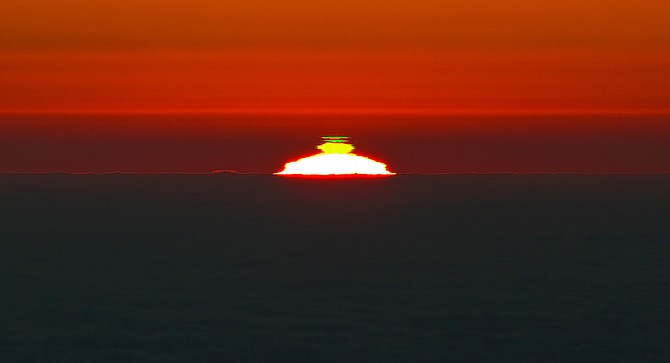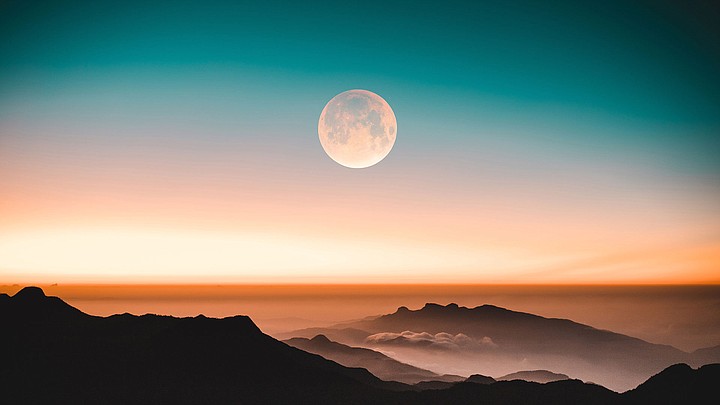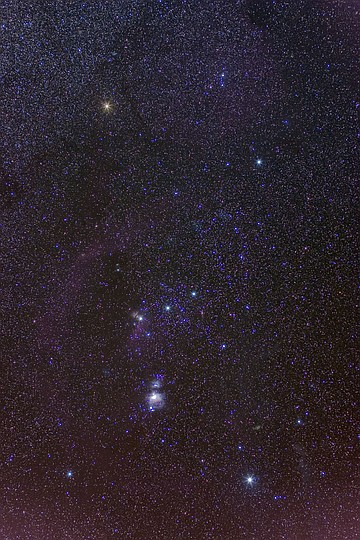 Facebook
Facebook
 X
X
 Instagram
Instagram
 TikTok
TikTok
 Youtube
Youtube

The Fabled “Green Flash” at sunset or sunrise can sometimes be seen on crystal-clear days in December and January. At the instant the sun’s upper rim is last visible at sunset, and also at the instant when it is first seen at sunrise, a flash of emerald-green color may be observed, especially on a flat horizon. Physicists explain this peculiar phenomenon as due to color-dispersion (as in a prism) and scattering of sunlight through the earth’s atmosphere. Binoculars (or a small telescope) are helpful in spotting it. For greenflash hunting at sunset, any site with a view of the ocean horizon suffices. For the sunrise green flash, any spot overlooking the low desert (Sunrise Highway in the Laguna Mountains, for example) is good.

December’s Full Moon - named the “cold moon,”“oak moon,”“wolf moon,” and “moon of long nights” according to the traditions of certain past cultures - rises spectacularly over the eastern horizon, only a few minutes after the time of sunset, on the evening of Tuesday, December 29 Some 14 hours later the moon sets in the west near the time of sunrise. Winter-solstice full moons spend a long time (14 hours) in the night sky (as seen from San Diego), just as the summer-solstice sun spends about 14 hours arcing across the daytime sky. The month’s full moon is also notable for being a “perihelion full moon,”which means that the moon is in a position closest to Earth along its elliptical orbit. The moon appears to be a little larger than normal in the sky as a result of this.

A Christmas star-tower This is the time of year when Orion shines in the east-southeast after dinnertime. He's well up now, but his three-star Belt is still nearly vertical. The Belt points up toward Aldebaran and, even higher, the Pleiades.
Jupiter and Saturn (magnitudes –2.0 and +0.6, respectively) shine historically close together in the southwest during and after twilight this week. Jupiter is the bright one; Saturn is only about a tenth as bright. Their separation shrinks from 0.3° on December 18th to 0.1° at conjunction on the 21st, then widens to 0.5° by the 25th. This means they'll fit together in many telescopes' low-power view all week. Just don't expect to see much of any telescopic detail on the two planets, due to the poor atmospheric seeing at their low altitude.
The above comes from the Outdoors listings in the Reader compiled by Jerry Schad, author of Afoot & Afield in San Diego County. Schad died in 2011. Planet information from SkyandTelescope.org.


The Fabled “Green Flash” at sunset or sunrise can sometimes be seen on crystal-clear days in December and January. At the instant the sun’s upper rim is last visible at sunset, and also at the instant when it is first seen at sunrise, a flash of emerald-green color may be observed, especially on a flat horizon. Physicists explain this peculiar phenomenon as due to color-dispersion (as in a prism) and scattering of sunlight through the earth’s atmosphere. Binoculars (or a small telescope) are helpful in spotting it. For greenflash hunting at sunset, any site with a view of the ocean horizon suffices. For the sunrise green flash, any spot overlooking the low desert (Sunrise Highway in the Laguna Mountains, for example) is good.

December’s Full Moon - named the “cold moon,”“oak moon,”“wolf moon,” and “moon of long nights” according to the traditions of certain past cultures - rises spectacularly over the eastern horizon, only a few minutes after the time of sunset, on the evening of Tuesday, December 29 Some 14 hours later the moon sets in the west near the time of sunrise. Winter-solstice full moons spend a long time (14 hours) in the night sky (as seen from San Diego), just as the summer-solstice sun spends about 14 hours arcing across the daytime sky. The month’s full moon is also notable for being a “perihelion full moon,”which means that the moon is in a position closest to Earth along its elliptical orbit. The moon appears to be a little larger than normal in the sky as a result of this.

A Christmas star-tower This is the time of year when Orion shines in the east-southeast after dinnertime. He's well up now, but his three-star Belt is still nearly vertical. The Belt points up toward Aldebaran and, even higher, the Pleiades.
Jupiter and Saturn (magnitudes –2.0 and +0.6, respectively) shine historically close together in the southwest during and after twilight this week. Jupiter is the bright one; Saturn is only about a tenth as bright. Their separation shrinks from 0.3° on December 18th to 0.1° at conjunction on the 21st, then widens to 0.5° by the 25th. This means they'll fit together in many telescopes' low-power view all week. Just don't expect to see much of any telescopic detail on the two planets, due to the poor atmospheric seeing at their low altitude.
The above comes from the Outdoors listings in the Reader compiled by Jerry Schad, author of Afoot & Afield in San Diego County. Schad died in 2011. Planet information from SkyandTelescope.org.
Comments